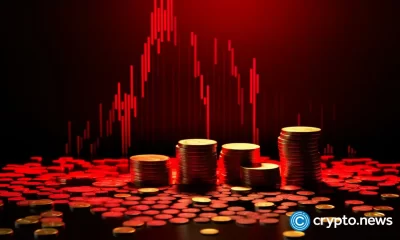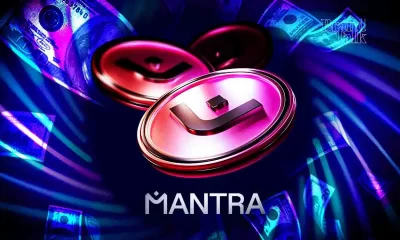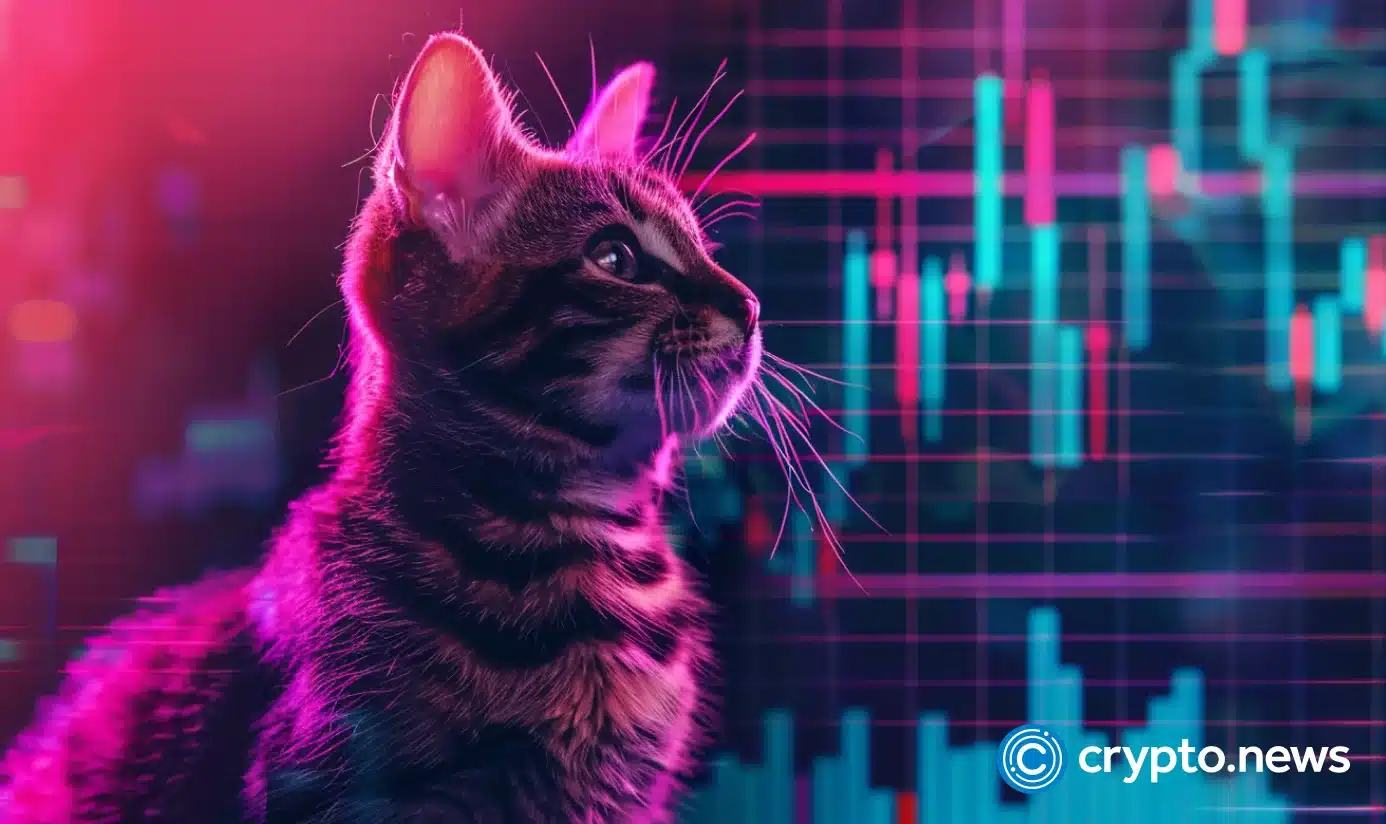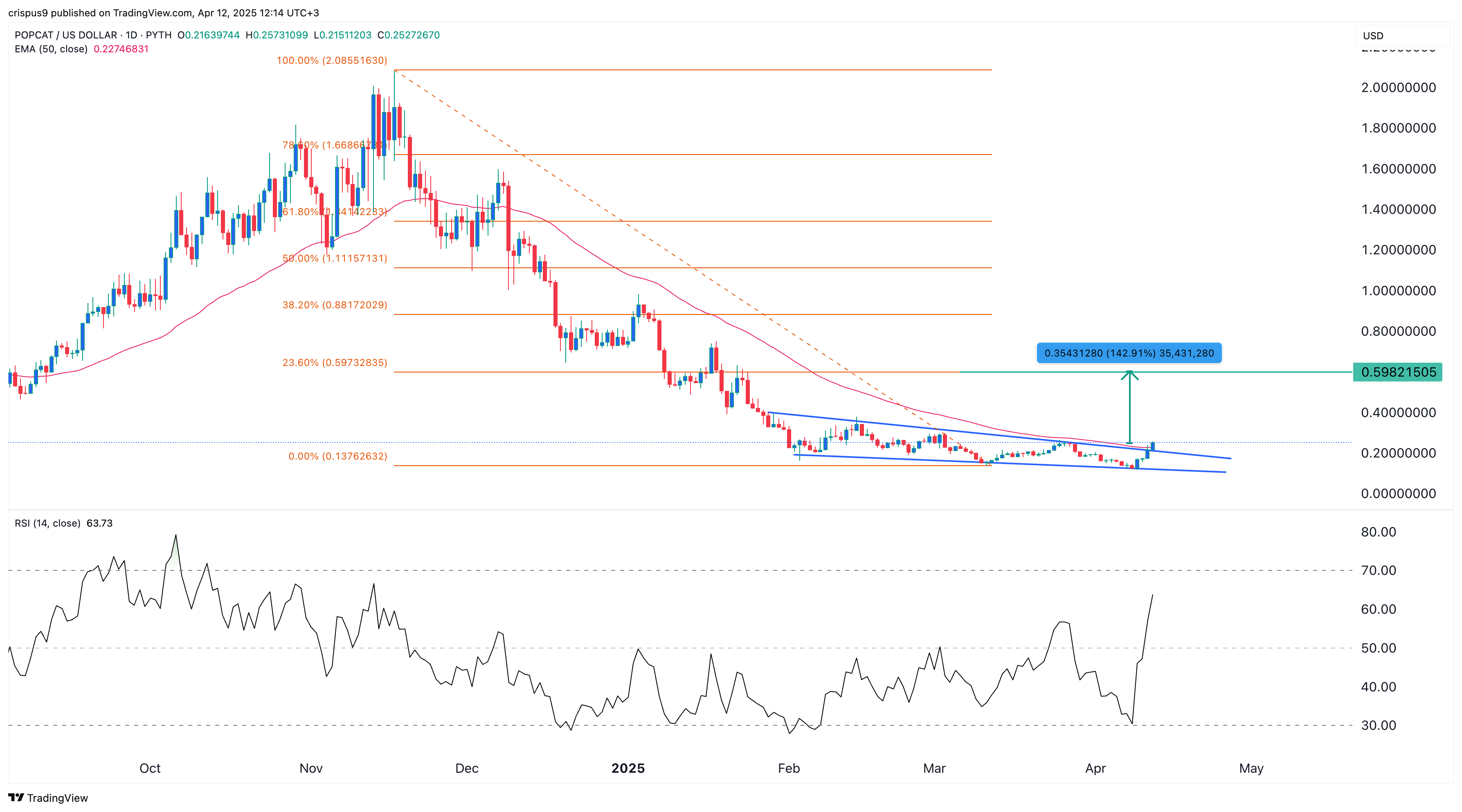Markets
Solana-Based Exchange Raydium’s RAY Dives 25% as Pump.Fun Appears to Test Its Own Exchange
Published
2 months agoon
By
admin

Solana-based token issuance platform Pump.Fun may soon be launching its own automated market maker (AMM), according to a URL connected to the site. However, there has been no public announcement yet.
AMM is a exchange system in crypto markets that makes trading easy by using a liquidity pool of usually, and at least, two tokens. Instead of matching buyers and sellers like a traditional exchange, smart contracts set the prices based on supply and demand and allow trades to be processed without a counterparty.
The “amm.pump.fun” shows a swap product in the making with a sell and buy option alongside a deposit and withdrawal function. That’s a first for Pump.Fun, which lets anyone issue a token for less than $2 in capital, after which they choose the number of tokens, theme, and meme picture to accompany it.
When the market capitalization of any token reaches $69,000, a portion of liquidity is deposited to the Solana-based exchange Raydium and burned (or when tokens are taken out of supply permanently).
Pump.Fun’s own AMM would mean tokens are no longer migrated to Raydium, or at least that’s what the market thinks, dampening sentiment for the latter’s RAY tokens. RAY is down 25% in the past 24 hours on the apparent development.
“It seems they are planning to have pump tokens graduate to their own pools instead of Raydium,” trader @trenchdiver101, who first flagged the development, said. “They can either extract more fees on Solana or have some mechanism to reward token holders.”
Though a part of Raydium’s total trading activity is derived from Pump.Fun tokens, the exchange supports several other top markets — such as Solana (SOL) to stablecoins and others — contributing to its $500 million in average daily trading volumes.
As such, the product could further bump the revenues and profits of Pump.Fun, which has no token but is among the most profitable crypto applications in the past year — a rare feat in a market where businesses heavily rely on token sales to generate income.
Pump.Fun has pocketed over $550 million in total fees since March 2024, data shows, with $2.4 billion in trading volumes over just the past two weeks. Over 8 million tokens have been issued on the platform since its 2024 launch, with a few, such as fartcoin (FART), reaching billions of dollars in market capitalization.
Source link
You may like


Fartcoin ‘Hot Air Rises’ — $1.50 Just A Whiff Away


What happened to the RWA token?


Crypto Strategist Sees Solana-Based Memecoin Surging Higher, Says One AI Altcoin Flashing Strong Chart


Mantra Team Responds As The OM Token Price Crashes Over 80% In 24 Hours


This Week in Crypto Games: Gaming Tokens Crash Out, Eve Frontier Opens Up


Commerce Secretary Lutnick walks back tariff relief on electronics
Gold
Gold ETF Inflows Hit Three-Year High as PAXG, XAUT Outperform Wider Crypto Market
Published
6 hours agoon
April 13, 2025By
admin
As traditional gold markets heat up, crypto investors are following suit—flocking to tokenized versions of the precious metal that offer both price exposure and digital flexibility.
Gold-backed cryptocurrencies like Paxos Gold (PAXG) and Tether Gold (XAUT) have risen 24.15% and 23.7% respectively year-to-date to new all-time highs above $3,300, roughly matching the performance of spot gold. Their prices have since receded slightly to $3,265 and $3,244, respectively.
While gold-backed cryptocurrencies surged so far this year, the wider cryptocurrency market has been in a downtrend. Bitcoin (BTC) has lost more than 11% of its value so far this year, while the wider crypto market has fallen by a little over 30%, based on the CoinDesk 20 (CD20) index.
The tokens, which are backed by physical gold and track its price, experienced a surge in value as investors sought refuge from the uncertainty induced by the escalating U.S.-China trade war.
The move echoes a broader return to gold as a safe-haven asset. Inflows into gold ETFs hit 226.5 tonnes in the first quarter of 2025, the highest level since early 2022, according to data from the World Gold Council. Nearly 60% of that demand came from North America.

Similarly, gold-backed cryptocurrencies saw net token minting of over $42.7 million in the first quarter of the year, according to data from RWA.xyz, helping along with gold’s price appreciation raise their total market capitalization near $1.4 billion.
Source link
Markets
Popcat price surges as exchange reserves fall, profit leaders hold
Published
16 hours agoon
April 13, 2025By
admin
Popcat, a top Solana meme coin, has staged a strong comeback as investors bought the dip and exchange reserves dropped.
Popcat (POPCAT) rose for four consecutive days, reaching a high of $0.25, its highest level since March 25. It has jumped by almos 100% from its lowest level this month.
The jump happened as crypto investors bought the dip in some specific Solana (SOL) meme coins like Fartcoin (FARTCOIN), Goatseus Maximus, Fartboy, and Vine.
Nansen data shows that more investors are moving their Popcat tokens from exchanges to self-custody. Exchange balances have dropped by almost 10% in the last seven days to 239.5 million, down from 262 million the same day last week. Most of these outflows were from Bybit, Raydium, and Coinbase.
The weekly supply of Popcat tokens on exchanges dropped by 2.3% to 24%. Falling exchange reserves is a bullish sign, signaling that more investors are taking a long-term view of the coin and are not dumping their tokens.
More data shows that the most profitable Popcat traders in the last seven days are not selling. The top trader has made a profit of $173,000 and still holds 97% of his position. The chart below shows that many of these traders still hold their tokens.

Popcat price analysis

The daily chart shows that the Popcat price has bounced back in the past few days. This rebound happened after the token formed a falling wedge pattern, which is shown in blue. This pattern is made up of two descending and converging trendlines.
The Popcat token has moved slightly above the 50-day moving average, while the Relative Strength Index and other oscillators have pointed upward.
Therefore, the coin will likely keep rising as bulls target the 23.6% retracement level at $0.5982, up 142% from the current level.
Source link
Bessent
Why The Bond Market Matters More Than Ever For U.S. Foreign Policy
Published
22 hours agoon
April 13, 2025By
admin
Scott Bessent’s Bond Strategy: The U.S. Ten-Year, Foreign Policy & the New Monetary Order
Experts from the Bitcoin Policy Institute unpack why the 10-year Treasury yield is central to Donald Trump’s policy ambitions and U.S. Treasury Secretary Scott Bessent’s economic strategy.
Featuring Bitcoin Policy Institute Executive Director Matthew Pines, Head of Policy Zack Shapiro and Growth Associate Zack Cohen.
They explore how bond market dynamics affect U.S. interest payments, trade policy, and the feasibility of industrial onshoring. As America confronts growing debt burdens and fiscal constraints, understanding the yield curve becomes critical for navigating the future of U.S. monetary policy and Bitcoin’s role within it.
From Episode #1 of The Bitcoin Policy Hour: “Wargaming the Mar-a-Lago Accord: Tariffs, Bitcoin and Stablecoins“.
Source link

Fartcoin ‘Hot Air Rises’ — $1.50 Just A Whiff Away

What happened to the RWA token?

Crypto Strategist Sees Solana-Based Memecoin Surging Higher, Says One AI Altcoin Flashing Strong Chart

Mantra Team Responds As The OM Token Price Crashes Over 80% In 24 Hours

This Week in Crypto Games: Gaming Tokens Crash Out, Eve Frontier Opens Up

Commerce Secretary Lutnick walks back tariff relief on electronics

Gold ETF Inflows Hit Three-Year High as PAXG, XAUT Outperform Wider Crypto Market

Israel’s New Study Shows 51% Of Public Is Interested In Adopting CBDC (Digital Shekel) – Is That So?

Solana Price Eyes Breakout Toward $143 As Inverse Head & Shoulders Pattern Takes Shape On 4-hour Chart

Crypto malware silently steals ETH, XRP, SOL from wallets

Binance Executives Met With US Government Officials To Discuss Easing of Regulatory Supervision: Report

Michael Saylor Hints At Another MicroStrategy Bitcoin Purchase, BTC Price To Rally?

From the Crypto Trenches to the Hill: Why Solana Is Making a Big Push in Washington

Bitcoin price tags $86K as Trump tariff relief boosts breakout odds

Where Top VCs Think Crypto x AI Is Headed Next

Arthur Hayes, Murad’s Prediction For Meme Coins, AI & DeFi Coins For 2025

Expert Sees Bitcoin Dipping To $50K While Bullish Signs Persist

Aptos Leverages Chainlink To Enhance Scalability and Data Access

Bitcoin Could Rally to $80,000 on the Eve of US Elections

Crypto’s Big Trump Gamble Is Risky

Sonic Now ‘Golden Standard’ of Layer-2s After Scaling Transactions to 16,000+ per Second, Says Andre Cronje

Institutional Investors Go All In on Crypto as 57% Plan to Boost Allocations as Bull Run Heats Up, Sygnum Survey Reveals

Ripple-SEC Case Ends, But These 3 Rivals Could Jump 500x

Has The Bitcoin Price Already Peaked?

A16z-backed Espresso announces mainnet launch of core product

The Future of Bitcoin: Scaling, Institutional Adoption, and Strategic Reserves with Rich Rines

3 Voting Polls Show Why Ripple’s XRP Price Could Hit $10 Soon

Xmas Altcoin Rally Insights by BNM Agent I

Blockchain groups challenge new broker reporting rule

I’m Grateful for Trump’s Embrace of Bitcoin
Trending

 24/7 Cryptocurrency News5 months ago
24/7 Cryptocurrency News5 months agoArthur Hayes, Murad’s Prediction For Meme Coins, AI & DeFi Coins For 2025

 Bitcoin3 months ago
Bitcoin3 months agoExpert Sees Bitcoin Dipping To $50K While Bullish Signs Persist

 24/7 Cryptocurrency News3 months ago
24/7 Cryptocurrency News3 months agoAptos Leverages Chainlink To Enhance Scalability and Data Access

 Bitcoin5 months ago
Bitcoin5 months agoBitcoin Could Rally to $80,000 on the Eve of US Elections

 Opinion5 months ago
Opinion5 months agoCrypto’s Big Trump Gamble Is Risky

 Altcoins2 months ago
Altcoins2 months agoSonic Now ‘Golden Standard’ of Layer-2s After Scaling Transactions to 16,000+ per Second, Says Andre Cronje

 Bitcoin5 months ago
Bitcoin5 months agoInstitutional Investors Go All In on Crypto as 57% Plan to Boost Allocations as Bull Run Heats Up, Sygnum Survey Reveals

 Price analysis5 months ago
Price analysis5 months agoRipple-SEC Case Ends, But These 3 Rivals Could Jump 500x


